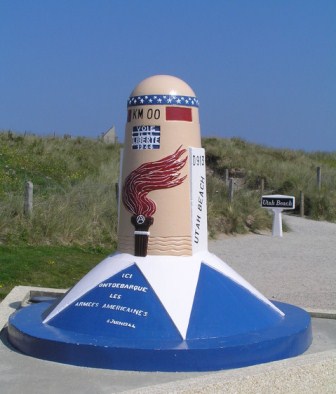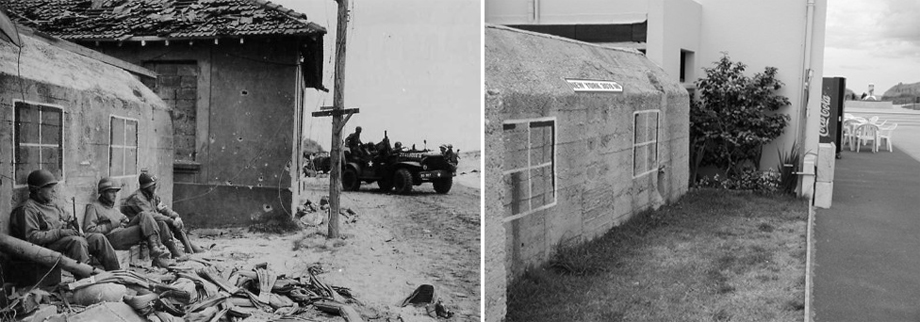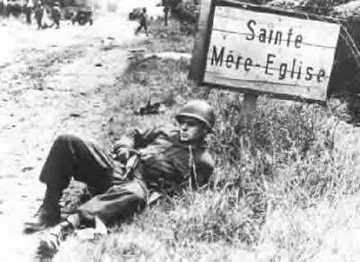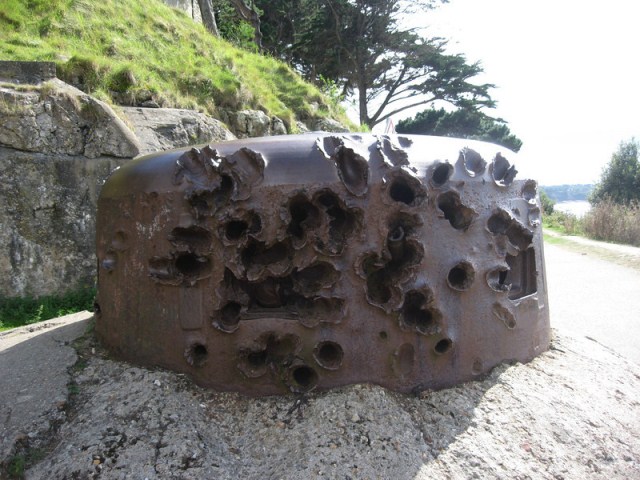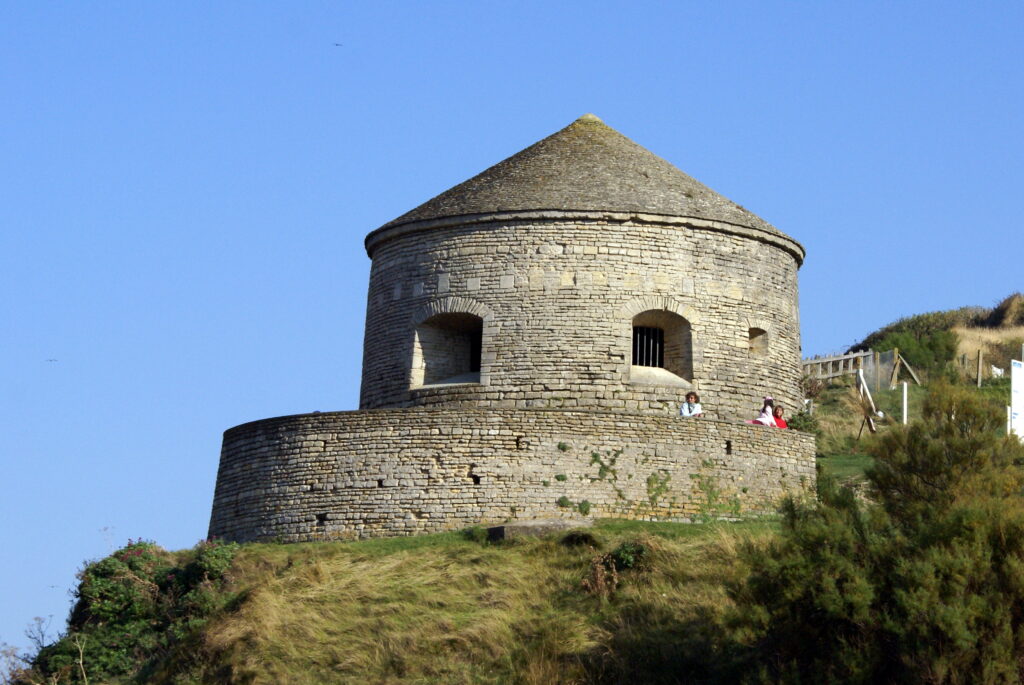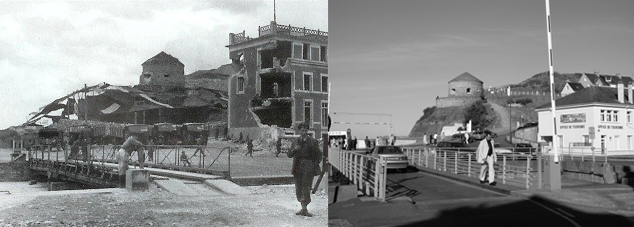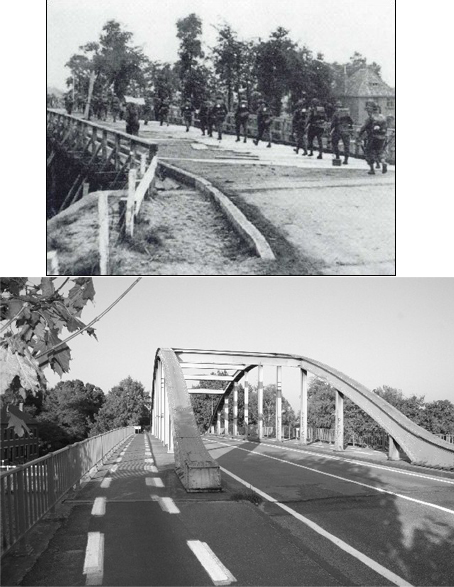
Utah beach (La Madeleine)
This pole marks the landing area of Utah beach. It is the start of the Liberty Road with milestones through France. It is here that Theodore Roosevelt comes to shore with his men. The planned landings should take place at 2km higher at ‘La Grande Dune’ but he ended up at La Madeleine, where there is little resistance.
From 1942 to June 1944, the old fisherman’s hut sheltered by dunes, what is now Roosevelt Café was used for the German Todt organization. Right next to the house was a bunker found by the Germans was used as a communication post. A nice comparison photo is to be made of a former bunker now a restaurant.
The main building became immediately after D-Day the U.S. Army 1st Engineer Special Brigade Communications Group accommodations. Between June and November 1944 the bunker was used as a communications center for the U.S. Navy, who oversaw the traffic between the fleet and the front. The 39 radio operators of the Command Task Group supported the NOIC (Naval Officer In Charge).
From the bunker, which is part of the Restaurant section are dated WW2 photos to find. The side view of the bunker still has two black / white painted windows as on the pictures to see that just after D-Day were taken. Mr. Methivier has made to his life’s work to identify veterans who during WW2 where living in his building . Behind large plexiglass sheets are handwritten messages to see soldiers who left behind their traces here just after D-Day.
Today behind the bunker a restaurant is situated: www.leroosevelt.fr

